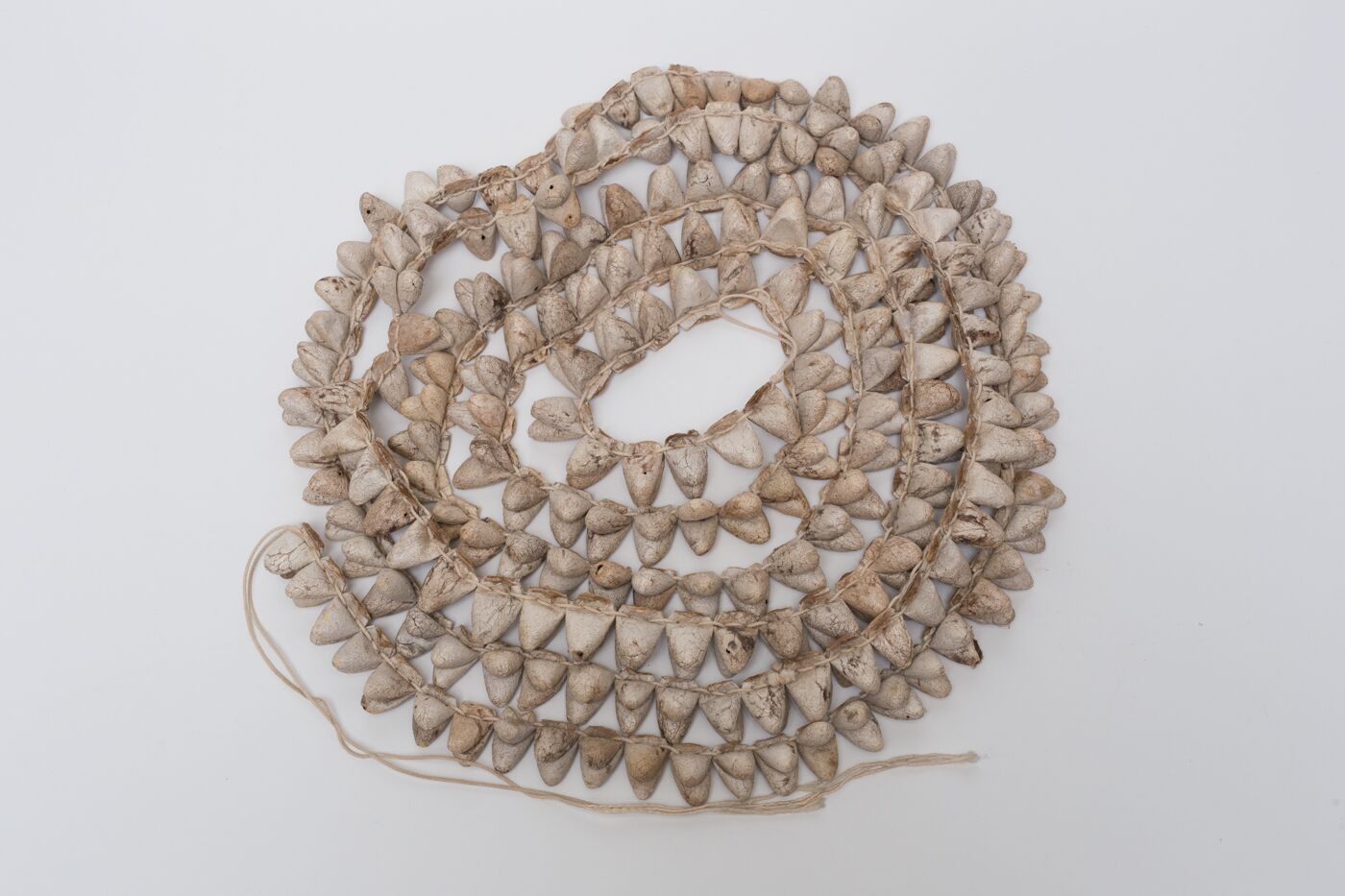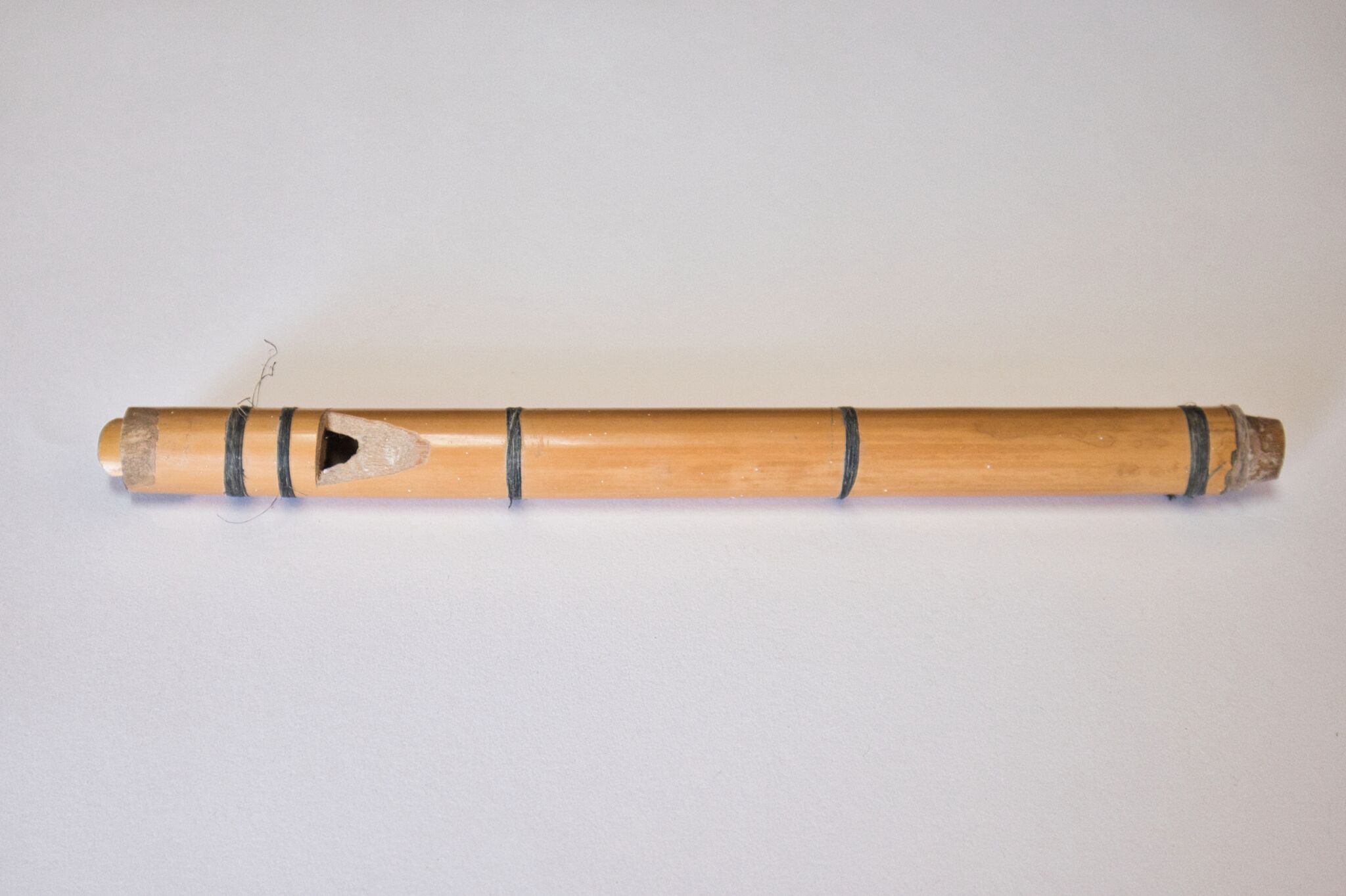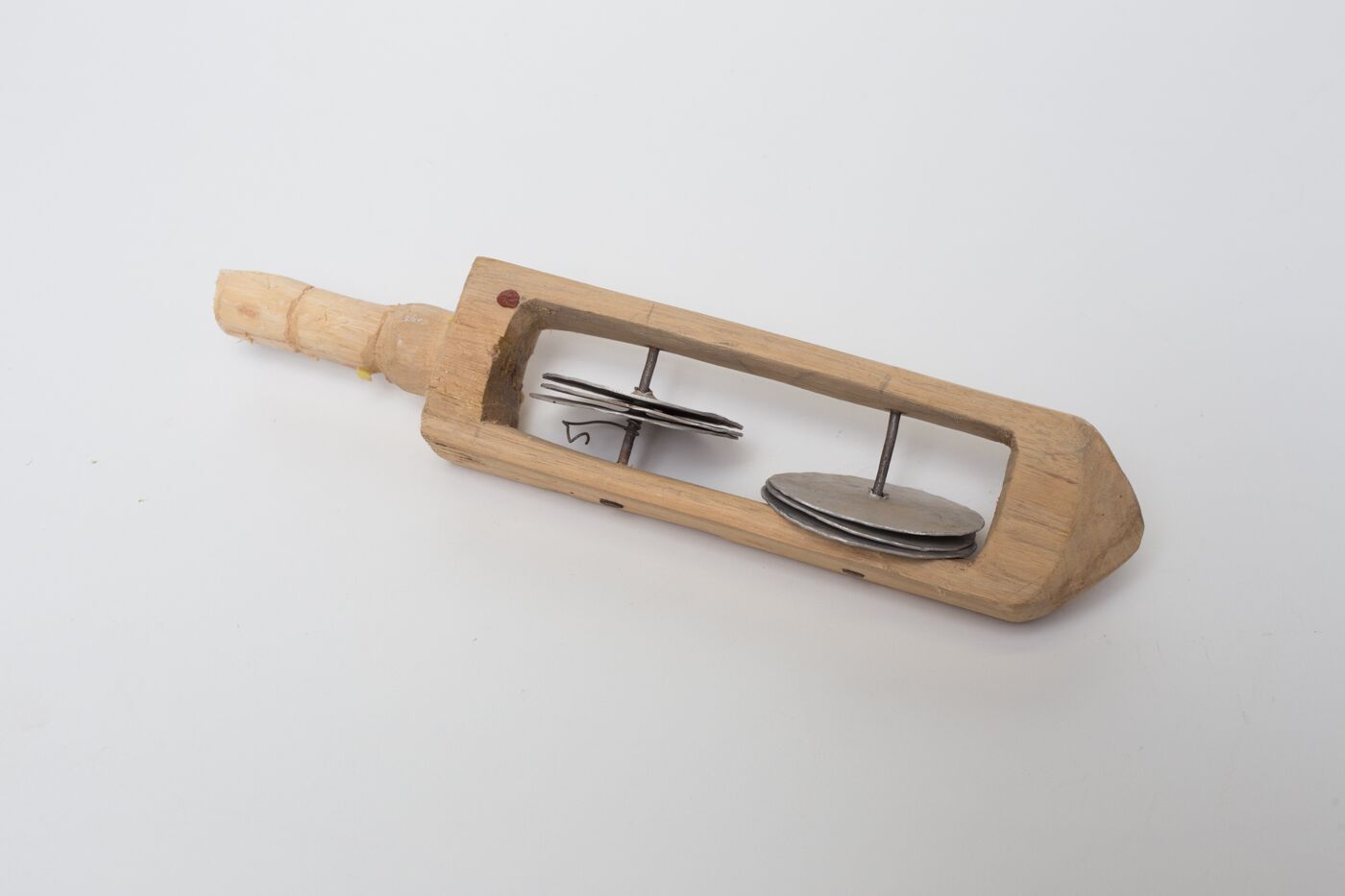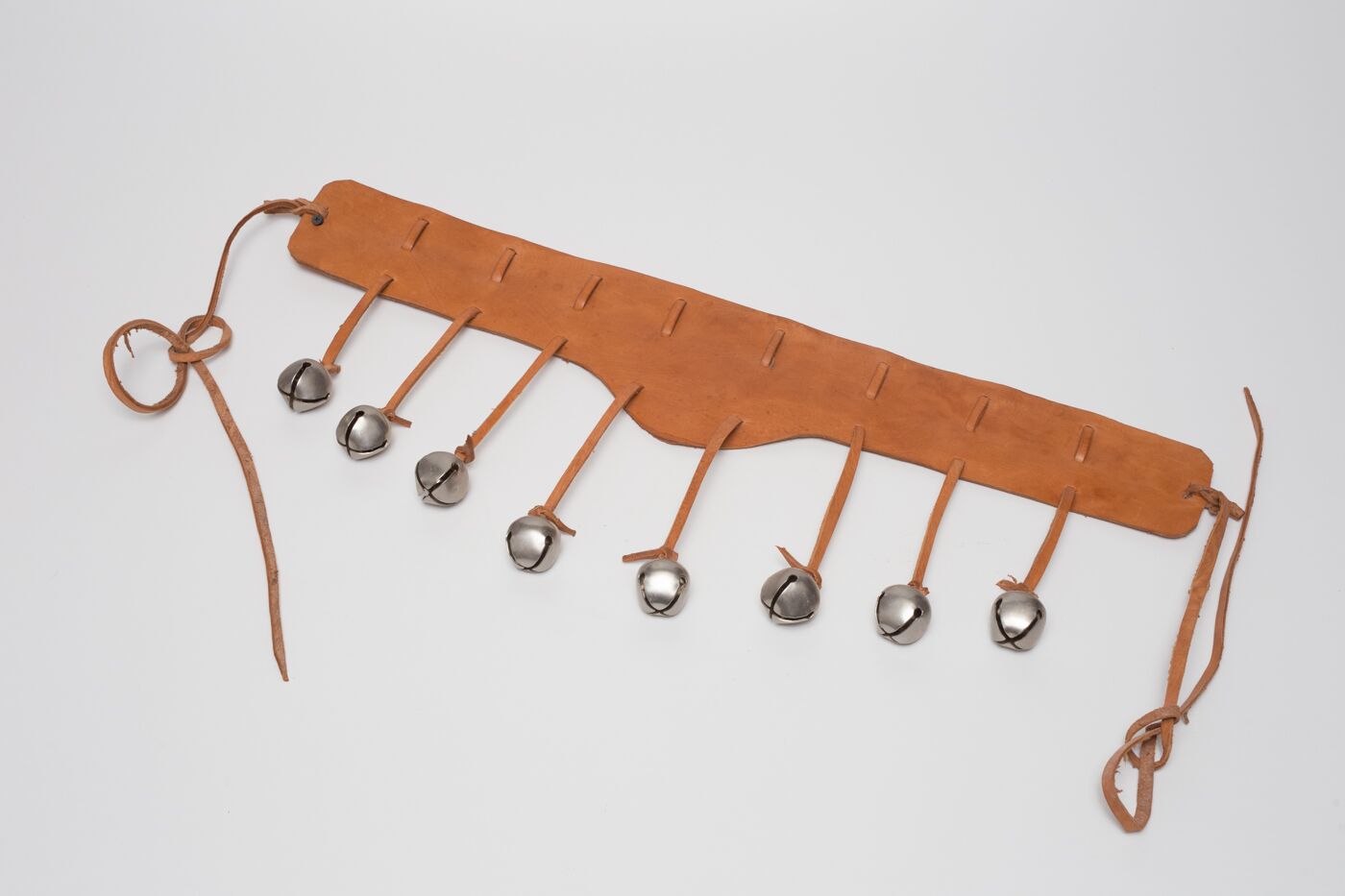-
 Tenábaris de pascolaDownload
Tenábaris de pascolaDownload
The so-called teneboim is an idiophone instrument, its literal translation is wild cocoons, which belong to the Four Mirrors butterfly; once dry, some small stones are placed inside; Once the process is finished with each of the cocoons, they are joined by a thick cotton thread, this thread or cord measures between 40 to 50 cm. Contrary to the teneboim used by the Venado dancer, no colored tassels are attached to the ends of the cocooned cord. The teneboim are used by the dancers of Venado, Pascolas and Chapayecas, as anklets on their legs. They have an esoteric meaning that is difficult to decipher, since it does not seem irrelevant that for their manufacture the cocoons are grouped in pairs, one with a deep voice, which seems to represent a male entity, and the other with a high-pitched timbre, reminiscent of the female voice, suggesting a dialogue or a complementation of opposing principles (Varela, 1986). Another mythical meaning in the case of the Pascola is that these teneboim represent the serpents (or evil) that tried to attack the mythical Yo'awa (deer) when he went down to the Yaqui River to drink water.
Metadata
Title
Moth Cocoon Ankle Rattles Pascola Length
Alternative title
Pajko’ola teneboim
Creator
Yaqui tribe
Created
1985
Description
Original object (physical):
Dimensions: 4 X 240 X 4.5 cm.
Butterfly cocoon hand sewing technique
Description
The so-called teneboim is an idiophone instrument, its literal translation is wild cocoons, which belong to the Four Mirrors butterfly; once dry, some small stones are placed inside; Once the process is finished with each of the cocoons, they are joined by a thick cotton thread, this thread or cord measures between 40 to 50 cm. Contrary to the teneboim used by the Venado dancer, no colored tassels are attached to the ends of the cocooned cord.
The teneboim are used by the dancers of Venado, Pascolas and Chapayecas, as anklets on their legs. They have an esoteric meaning that is difficult to decipher, since it does not seem irrelevant that for their manufacture the cocoons are grouped in pairs, one with a deep voice, which seems to represent a male entity, and the other with a high-pitched timbre, reminiscent of the female voice, suggesting a dialogue or a complementation of opposing principles (Varela, 1986). Another mythical meaning in the case of the Pascola is that these teneboim represent the serpents (or evil) that tried to attack the mythical Yo'awa (deer) when he went down to the Yaqui River to drink water.
Format
Still image / jpg
Spatial
Sonora , Cócorit
Temporal
1981 -1990
Is part of
Music and dance room, Museum of the Yaqui people
Provenance
Museum of the Yaqui people. Sinaloa and Obregon No. 200, Cocorit, Cajeme, Sonora
It has been part of the museum's collection since its creation in 1985.
Language
eng , yaqui
Date
2021-09-26
Identifier
Web Catalogación Obregón 2016 - 2699
ISC-CGPC-MY-0016
RS-OM-MEY-16
Relationship
Drum | Pascola Mask | Flute | Pascola Dancer Bells Belt | Pascola Drum | Pascola dancer hand rattle | Chapayeca | Pascola dancer | Water Drum
References
Varela-Ruiz, Leticia T. (1986). La música en la vida de los yaquis . Sonora: Secretaría de Fomento Educativo y Cultura
Contributor
Sonoran Institute of Culture
Casanova, Juan (photography)
Buitimea Flores, Teodoro; Ruiz Félix, José María (investigation)
Valencia, Carlos ; The Yaqui Pride Project (translation to english)
License

This work is licensed under a Creative Commons Attribution-NonCommercial-ShareAlike 4.0 International License.
Rights
Sonoran Institute of Culture



